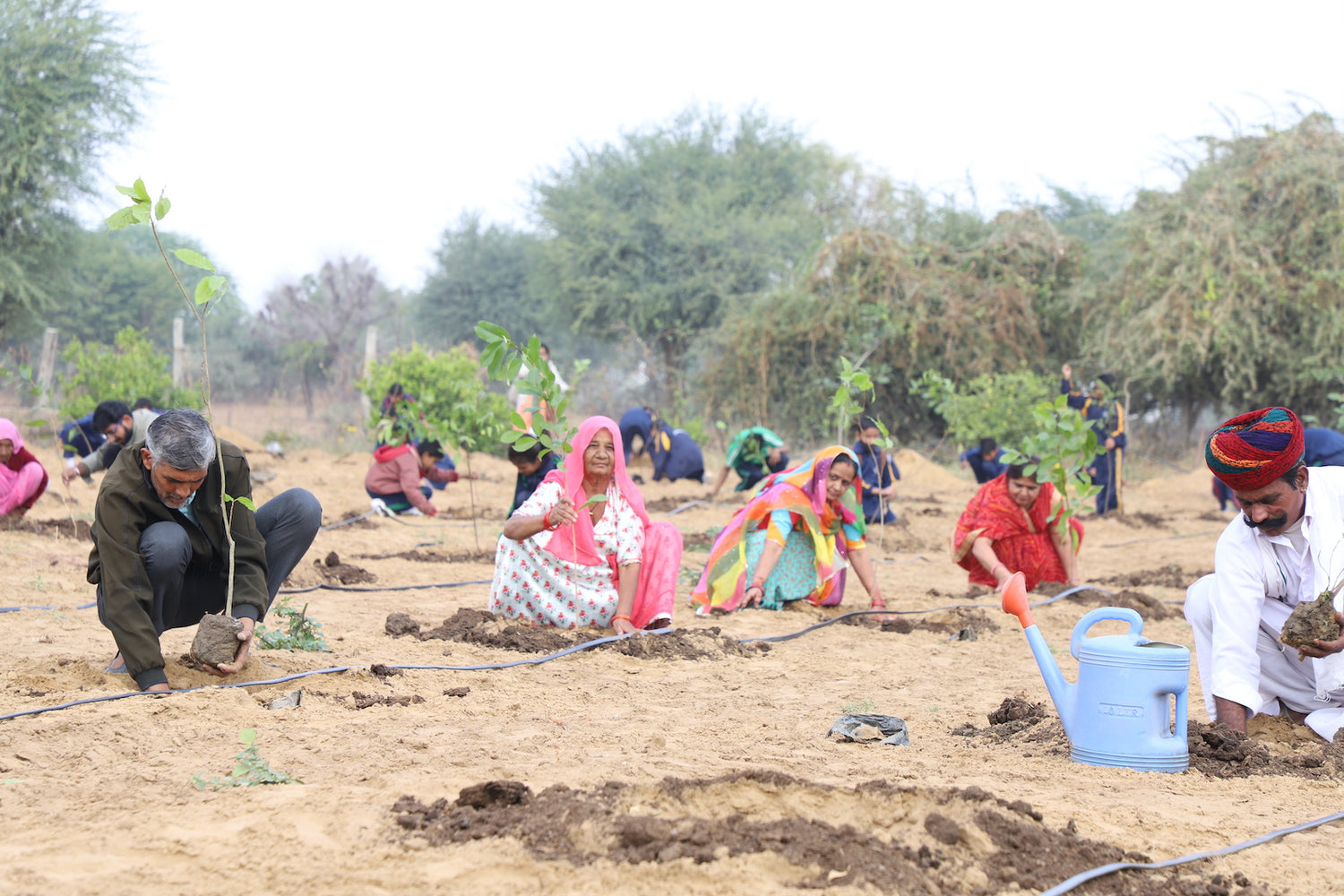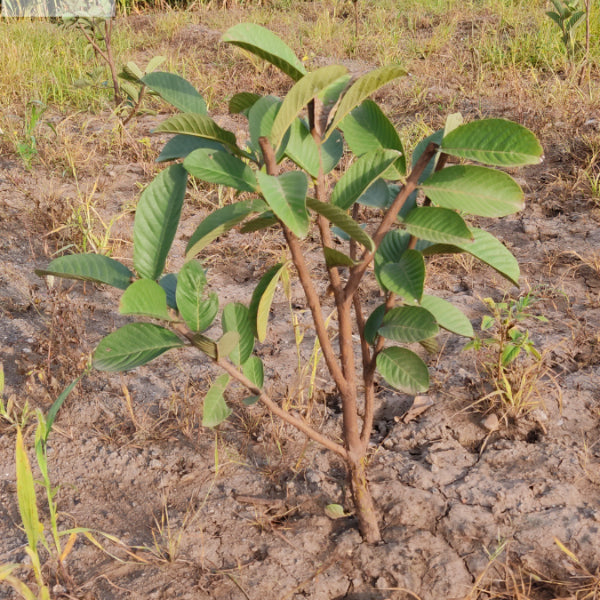How to Register a Carbon Project: Step-by-Step Process
How to Register a Carbon Project: Step-by-Step Process 🌍 In the face of climate change, carbon projects have emerged as a vital tool for reducing gre Read more
Connect with us
-
👥 Corporates
If you are looking for:
- 🌲 Tree Plantation Events
- 📊 CSR Projects
📧 corporate@growbilliontrees.com
📞 +91 9699723523
💬 +91 9325931304 WhatsApp (Only)
🕒 Mon - Sat | 10am - 7pm IST
-
🧩 Tree Plantation NGOs
If you are looking for:
- 💰 Financial Assistance
- 🤝 Operational Support
📧 support@growbilliontrees.com
📞 +91 9699723523
💬 +91 9325931304 WhatsApp (Only)
🕒 Mon - Sat | 10am - 7pm IST
-
🌼 Individuals
If you are looking for:
- 👥 Group Tree Plantation Drive
- 🌳 Bulk Tree Plantation
📞 +91 9699723523
💬 +91 9325931304 WhatsApp (Only)
🕒 Mon - Sat | 10am - 7pm IST
Trending
Trees for Corporates
How to Register a Carbon Project: Step-by-Step Process 🌍
In the face of climate change, carbon projects have emerged as a vital tool for reducing greenhouse gas emissions. Registering a carbon project can seem daunting, but with the right guidance, it can be a straightforward process. This article will walk you through the step-by-step process of registering a carbon project, while also highlighting the significant environmental impact and the role of organizations like Grow Billion Trees Partners in executing and promoting these initiatives.
Step 1: Understand Carbon Credits and Their Importance 🌱
Carbon credits represent a reduction of one metric ton of carbon dioxide emissions. The concept originated from the Kyoto Protocol in 1997, which aimed to combat climate change by allowing countries to trade emissions allowances. Fun fact: As of 2021, the global carbon market was valued at over $272 billion, reflecting the growing importance of carbon credits in mitigating climate change.
Step 2: Identify the Type of Carbon Project 🌳
There are various types of carbon projects, including:
- Afforestation and Reforestation: Planting trees to absorb CO2.
- Renewable Energy Projects: Wind, solar, and hydroelectric projects that reduce reliance on fossil fuels.
- Energy Efficiency Projects: Initiatives that reduce energy consumption in buildings and industries.
Choose a project type that aligns with your goals and local environmental needs.
Step 3: Conduct a Feasibility Study 🔍
Before proceeding, conduct a feasibility study to assess the project's viability. This includes:
- Evaluating the potential carbon sequestration capacity.
- Understanding local regulations and market conditions.
- Identifying stakeholders and potential partners.
Step 4: Develop a Project Design Document (PDD) 📄
The PDD outlines the project's objectives, methodologies, and expected outcomes. It should include:
- Baseline emissions scenario.
- Monitoring and reporting plans.
- Risk assessment and mitigation strategies.
Step 5: Select a Carbon Standard 🏅
Choose a recognized carbon standard to ensure credibility. Popular standards include:
- Verified Carbon Standard (VCS): One of the most widely used standards globally.
- Gold Standard: Focuses on sustainable development and community benefits.
- Climate Action Reserve (CAR): Emphasizes transparency and environmental integrity.
Step 6: Validation and Verification 🔒
Once the PDD is complete, submit it for validation by an accredited third-party organization. This process ensures that the project meets the chosen standard's requirements. After validation, the project must undergo periodic verification to confirm that it is achieving the projected carbon reductions.
Step 7: Register the Project 📈
After successful validation, register the project with the chosen carbon standard. This typically involves submitting the validated PDD and paying a registration fee. Once registered, the project can begin generating carbon credits.
Step 8: Monitor and Report 🌐
Ongoing monitoring is crucial to ensure the project continues to meet its objectives. Regular reporting to the carbon standard is required to maintain certification and generate credits. This includes documenting carbon sequestration, project activities, and any changes in project conditions.
Environmental Impact of Carbon Projects 🌿
Carbon projects play a significant role in combating climate change. For instance, a study published in Nature Climate Change found that reforestation could sequester up to 1.1 billion tons of CO2 annually. Additionally, these projects often provide co-benefits such as biodiversity conservation, improved air quality, and enhanced community resilience.
Grow Billion Trees Partners: Leading the Way 🌳🤝
Grow Billion Trees Partners is at the forefront of executing and promoting carbon projects in various regions. Their approach includes:
- Collaborating with local communities to ensure sustainable practices.
- Utilizing advanced technology for monitoring and reporting.
- Engaging in educational initiatives to raise awareness about the importance of carbon projects.
By partnering with Grow Billion Trees Partners, individuals and organizations can contribute to a greener future while also benefiting from the carbon credits generated through these projects.
Conclusion 🌈
Registering a carbon project is a vital step towards mitigating climate change and promoting sustainability. By following this step-by-step process and collaborating with organizations like Grow Billion Trees Partners, you can make a meaningful impact on the environment. Together, we can work towards a healthier planet for future generations.
You may like
How to Start a Carbon Project
Ready to dive into the world of carbon credits? Starting a carbon project is like planting a tree; it takes time, care, and a little bit of know-how. This guide will help you navigate the initial steps, from brainstorming your project idea to understanding the importance of carbon offsets.
Carbon Project Registration Process
Think of this as the paperwork party you never wanted to attend. But fear not! We’ll break down the registration process into bite-sized pieces, making it less daunting and more like a fun scavenger hunt for your project’s future.
Choosing the Right Standards
Standards are like the rules of a game; pick the wrong one, and you might end up playing Monopoly instead of Scrabble. We’ll help you choose the right standards that align with your project goals and ensure you’re playing by the right rules.
Project Design Document (PDD)
The PDD is your project’s resume, showcasing its strengths and potential. Crafting a compelling PDD is crucial, as it’s your chance to impress the carbon credit gatekeepers and secure your project’s future.
Stakeholder Engagement
Engaging stakeholders is like hosting a dinner party; you want everyone to feel included and valued. We’ll guide you on how to effectively communicate with stakeholders, ensuring they’re on board and excited about your carbon project.
Monitoring and Reporting
Think of monitoring and reporting as the health check-ups for your carbon project. Regular assessments keep your project in tip-top shape and ensure you’re meeting your carbon reduction goals.
Verification Process
Verification is the final exam for your carbon project, and you want to ace it! We’ll walk you through the verification process, ensuring you’re prepared to impress the auditors and secure those precious carbon credits.
Carbon Credit Issuance
carbon credit issuance! This is where your hard work pays off, and you can finally bask in the glory of your project’s success.
Selling Carbon Credits
Now that you have your carbon credits, it’s time to hit the market! Selling carbon credits can be as thrilling as a game of poker, and we’ll provide tips on how to maximize your profits while keeping it ethical.
Long-term Sustainability
A carbon project isn’t just a one-hit wonder; it’s a long-term commitment. We’ll discuss strategies for ensuring your project remains sustainable and impactful for years to come, making it a legacy rather than a fleeting trend.
Common Pitfalls to Avoid
Every journey has its bumps, and the carbon project path is no different. We’ll highlight common pitfalls to avoid, ensuring your project doesn’t end up in the carbon credit graveyard.
Future Trends in Carbon Projects
The world of carbon projects is ever-evolving, and staying ahead of the curve is key. We’ll explore future trends that could shape your project’s direction, ensuring you’re not just keeping up but leading the charge.
Corporate Plantations
FAQ
How to start my carbon project?
First, identify your project type, whether it’s reforestation, renewable energy, or something else. Then, gather your team of eco-warriors and research the carbon standards that suit your project. Remember, every tree counts, and so does every step!
What are the benefits of registering a carbon project?
Besides the warm fuzzy feeling of saving the Earth, registering a carbon project can bring in some serious cash through carbon credits. Plus, you’ll gain credibility, attract investors, and contribute to a sustainable future. Who knew being a hero could be so profitable
How do I choose the right carbon standard?
Choosing a carbon standard is like picking a favorite child—tough but necessary! Research options like Verra or Gold Standard, and consider your project’s goals, location, and scale. Each standard has its quirks, so find the one that fits your project like a glove!
What documentation do I need?
Get your paperwork ready! You’ll need a project design document, baseline data, monitoring plans, and proof of additionality. Think of it as your project’s resume—make it shine! The more organized you are, the smoother the registration process will be.
How long does the registration process take?
Patience is a virtue, my friend! The registration process can take anywhere from a few months to over a year, depending on the complexity of your project and the standard you choose. So, grab a cup of coffee and enjoy the wait while dreaming of your carbon credits!
Can I register a carbon project alone?
Sure, if you’re a lone wolf with a passion for trees! However, having a team can make the process smoother and more fun. Collaborating with experts in carbon markets, forestry, and project management can help you navigate the complexities and avoid pitfalls. Teamwork makes the dream work!
What costs are involved in registering a carbon project?
Ah, the million-dollar question! Costs can vary widely, but expect expenses for project development, validation, and verification. Budget for consultancy fees, monitoring equipment, and registration fees. It’s an investment in the planet, so think of it as paying for your eco-friendly superhero cape!
How do I monitor my carbon project?
Monitoring is like keeping an eye on your pet goldfish—essential for its health! Set up a robust monitoring plan to track carbon sequestration, biodiversity, and project impacts. Regularly collect data and report it according to your chosen standard. Remember, transparency is key to keeping your project credible!
What happens after registration?
Congratulations, you’re officially a carbon project owner! After registration, you’ll need to implement your project, monitor its progress, and report results. You’ll also start generating carbon credits, which you can sell or trade. It’s time to roll up your sleeves and get to work—Mother Nature is counting on you!
Can I sell carbon credits?
Absolutely! Once your project is registered and verified, you can sell those shiny carbon credits to businesses looking to offset their emissions. It’s like turning your eco-efforts into cash! Just make sure to keep track of your credits and comply with the regulations.
What if my project doesn’t meet the standards?
Don’t panic! If your project doesn’t meet the standards, you can always adjust and improve. Revisit your project design, enhance monitoring, or seek expert advice. Remember, every setback is a setup for a comeback. Keep pushing forward; the planet needs you!
How do I promote my carbon project?
Time to spread the word! Use social media, blogs, and community events to showcase your project’s impact. Collaborate with local businesses and influencers to amplify your message. The more people know about your project, the more support you’ll gain. Let your eco-hero flag fly high!























